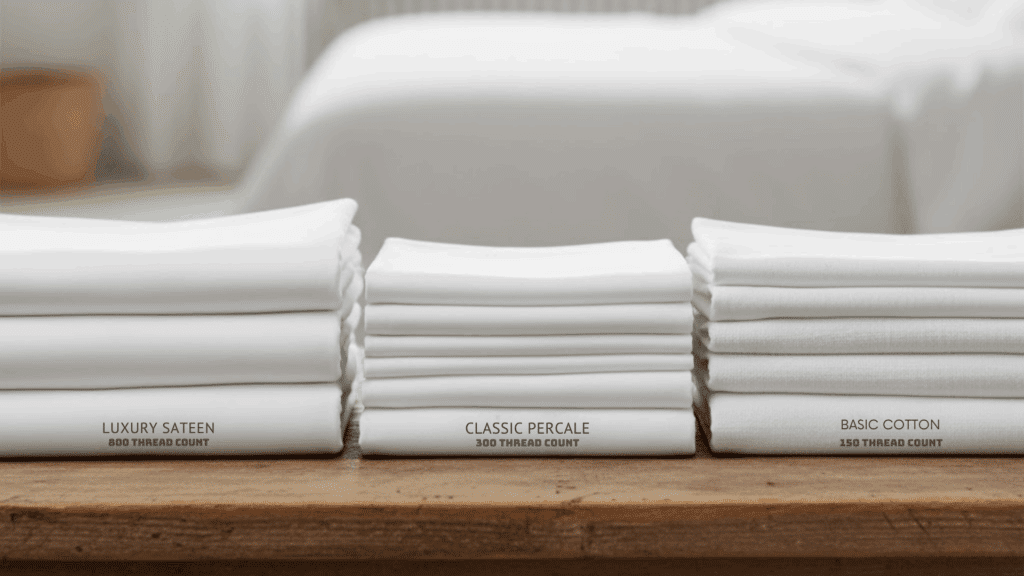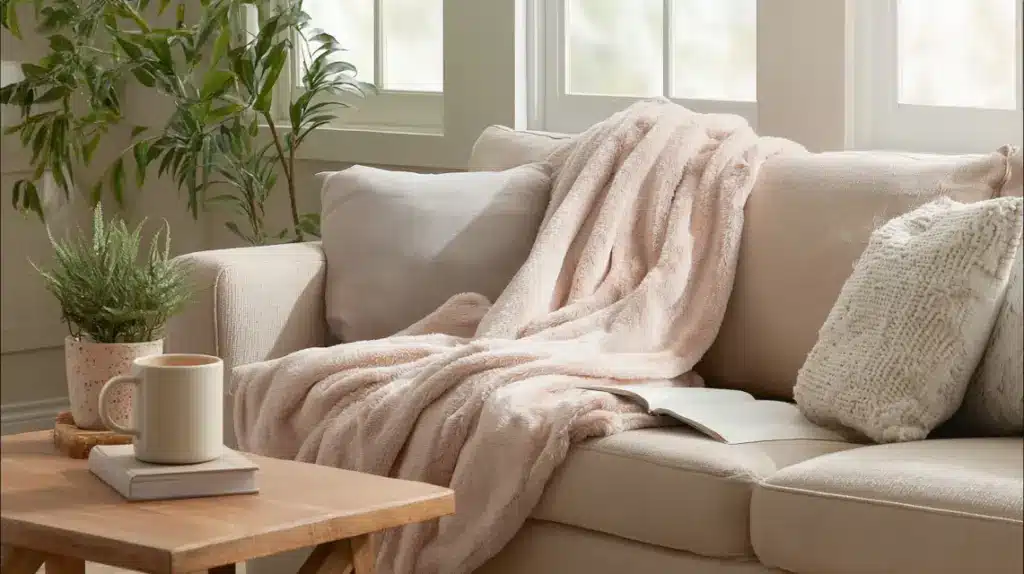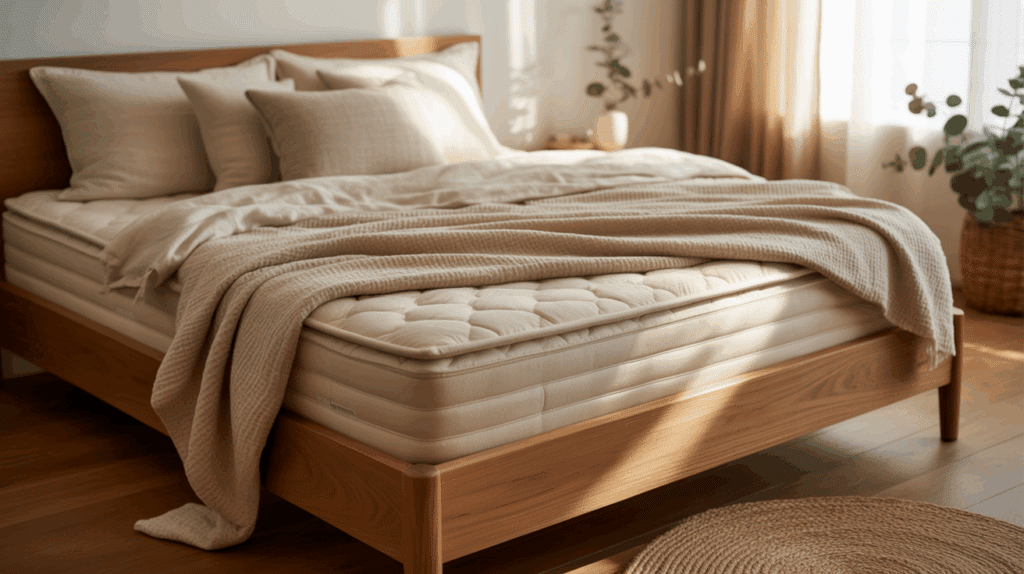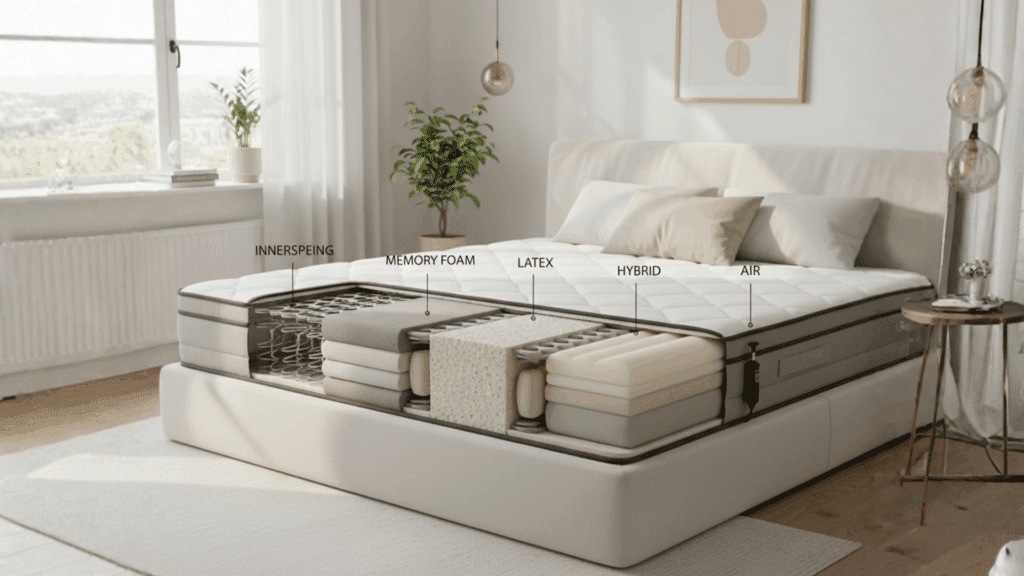Finding the best thread count for sheets can feel like guessing in the dark. I’ve been there; standing in the bedding aisle, wondering why one set costs double just for a bigger number on the tag.
The truth is, comfort comes from more than a thread count alone.
In this guide, you’ll learn what those numbers really mean, how weave and fiber affect the feel, and which range works best for your sleeping style.
My goal is to help you pick sheets that feel soft, last longer, and actually help you sleep better; without getting lost in marketing terms.
Why Thread Count Isn’t the Only Thing That Matters
Thread count shows how many threads fit into one square inch of fabric. But a higher number doesn’t always mean softer sheets.
- Many high-count sheets use multi-ply yarns, twisted strands that make fabric heavy and trap heat.
- These sheets can pill, lose breathability, and wear out sooner.
Focus on what truly matters:
- Fiber quality: Long-staple cottons like Supima or genuine Egyptian cotton feel soft and last longer.
- Weave type: Percale stays crisp and cool, while sateen feels smoother and warmer.
- Certifications: Labels like OEKO-TEX® and GOTS confirm safe, high-quality materials.
Mid-range thread counts with quality fibers almost always outperform inflated numbers.
What is the Best Thread Count for Sheets?
The best thread count for sheets is generally between 300 and 500. This range offers softness, breathability, and durability without making the fabric too thick, heavy, or prone to trapping heat.
1. Percale Sheets
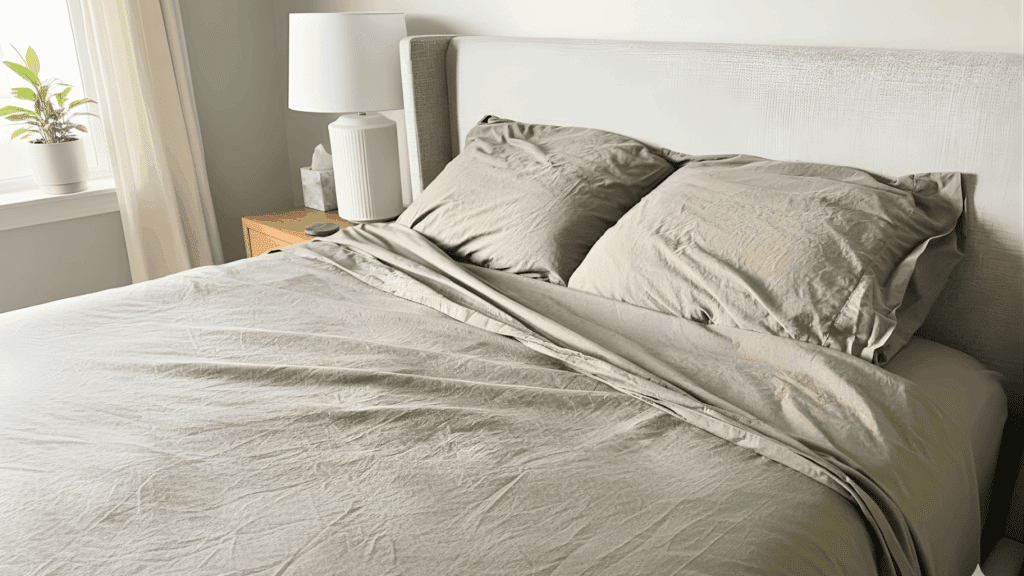
Percale sheets are known for their crisp, hotel-like texture and cool feel. With a one-over, one-under weave, they stay lightweight and breathable.
The best range sits between 200 and 400, offering excellent airflow and a clean, fresh touch after every wash.
Anything under 200 feels rough, while going above 400 can make percale lose its signature coolness. These are perfect for hot sleepers or humid climates, where breathability matters most.
2. Sateen Sheets

Sateen sheets are great for those who enjoy a soft, silky finish and a gentle sheen. The weave places more threads on the surface, creating a smooth, luxurious drape that feels cozy against the skin.
A thread count between 300 and 600 delivers the right balance of softness and durability. Lower counts may feel flat, while higher ones can become too warm or heavy.
Sateen is an excellent choice for cool rooms or winter months when you want added warmth without bulk.
3. Egyptian Cotton Sheets

True Egyptian cotton sheets are made from long-staple fibers, which naturally resist pilling and grow softer with time.
A range of 300 to 400 thread count gives the best mix of comfort and strength, creating smooth sheets that breathe well.
Higher numbers rarely improve quality; they often just make the fabric dense and less airy.
Authentic Egyptian cotton remains one of the most durable and comfortable options available, especially for those who want sheets that last.
4. Bamboo Sheets

Bamboo sheets, often made from viscose or lyocell, are valued for their temperature regulation and moisture control.
The ideal thread count range is 300 to 500, which keeps them silky, lightweight, and naturally cool. This range allows the fabric to stay breathable while maintaining strength.
Higher thread counts can reduce the smooth, airy feel bamboo is known for. These sheets are excellent for warm climates or people who sweat easily at night.
5. Linen Sheets
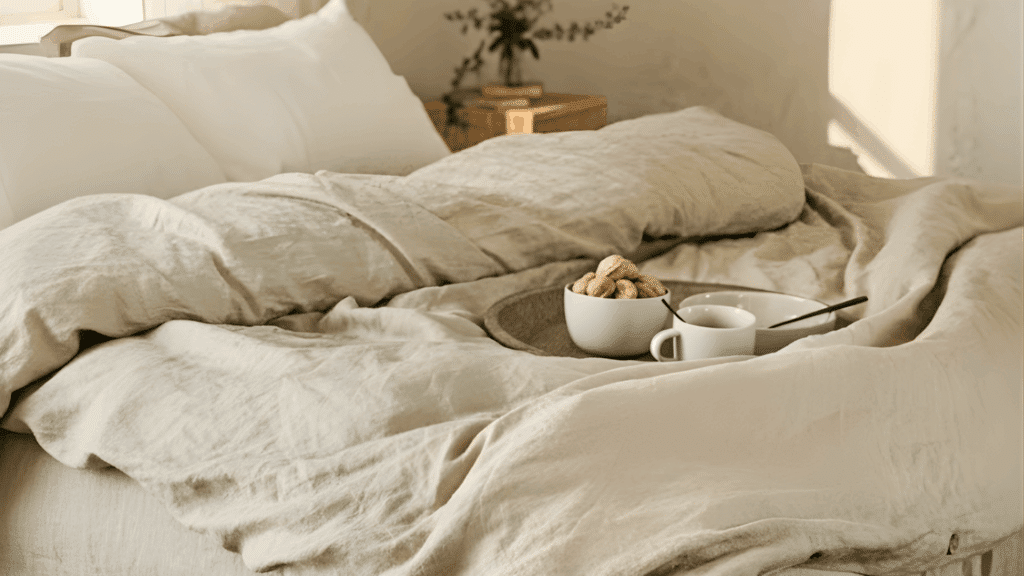
Linen sheets stand out for their natural texture and long lifespan. They don’t rely on thread count the same way cotton or bamboo do.
Most quality linen sheets range between 80 and 140, but it’s better to check GSM (grams per square meter) to understand fabric weight.
Heavier GSM means thicker, more durable fabric, while lighter GSM stays airy and ideal for warm weather. Linen softens with every wash and is perfect for all-season comfort due to its breathability.
6. Ultra-High Thread Counts Sheets

Sheets boasting 800–1000 thread counts often use twisted, multi-ply yarns to inflate numbers.
This marketing tactic doesn’t improve softness; it usually makes sheets heavier, hotter, and less durable.
High-quality single-ply fabrics in the 300–500 range outperform these inflated versions in both comfort and longevity. If a sheet sounds too good to be true based on thread count alone, it probably is.
In short, 300 to 500 is the sweet spot for most sheet types. It offers a soft, breathable feel that holds up to everyday use.
When buying, pay closer attention to fiber quality and weave; not just the number on the label; to find sheets that feel great night after night.
How Weave Affects the Best Thread Count for Sheets

The weave determines how sheets feel, drape, and regulate temperature. Here’s how percale and sateen compare:
| Feature | Percale Weave | Sateen Weave |
|---|---|---|
| Weave Pattern | One thread over, one thread under | Multiple threads over, one thread under |
| Texture | Crisp, matte, and cool to the touch | Smooth, silky, and slightly glossy |
| Feel | Light, breathable, and airy | Soft, cozy, and warm |
| Best Thread Count Range | 200–400 | 300–600 |
| Ideal For | Hot sleepers, humid climates, summer months | Cold sleepers, cool rooms, winter seasons |
| Appearance | Matte finish with a fresh, hotel-like feel | Subtle sheen with a heavier drape |
| Durability | Strong weave that softens over time | Slightly more prone to pilling over long use |
Percale feels crisp and cool, while sateen feels smoother and warmer. Choose percale for breathability or sateen for softness, the right weave often matters more than the number printed on the tag.
Matching Thread Count to Sleeping Style and Climate
The best thread count for sheets also depends on how warm or cool you sleep.
- Hot sleepers or warm climates: Percale or bamboo sheets between 250 and 350 thread count allow airflow and moisture control.
- Cold sleepers or cooler climates: Sateen sheets between 400 and 500 thread count add warmth and softness.
- All-season comfort: Cotton sheets between 300 and 400 thread count provide balance across temperature changes.
Choosing the right range for your body and bedroom conditions will make a bigger difference than any “premium” number on the packaging.
How to Spot Quality Sheets Beyond Thread Count
A high thread count might sound impressive, but it doesn’t always mean better sleep. What truly matters is how the sheet is made and what it’s made from.
Here’s how to tell the difference between genuine quality and clever marketing:
- Step 1: Check fiber type – Look for long-staple cotton (like Supima or Egyptian) or bamboo lyocell. These fibers feel smoother, resist pilling, and last longer than short-staple varieties.
- Step 2: Avoid inflated numbers – Be cautious of thread counts above 800. Many use twisted, multi-ply yarns to boost the number, which makes sheets heavier and less breathable.
- Step 3: Read labels carefully – Check for clear details on the fiber source, weave type, and finish. Missing or vague information often signals lower-quality fabric.
- Step 4: Watch for certifications – Look for OEKO-TEX® or GOTS labels. These confirm the sheets are safe, non-toxic, and responsibly produced.
- Step 5: Trust real reviews – Customer reviews show how sheets hold softness, breathability, and strength after multiple washes.
When you look past the numbers, you’ll find real quality comes from the fiber, weave, and craftsmanship, not just the thread count.
Caring for Sheets to Preserve Feel and Durability
Even the best sheets need the right care to stay soft and last longer. Simple washing and drying habits can make a big difference in how your sheets feel and wear over time.
- Wash before first use to remove factory coatings and soften the fibers.
- Use mild detergent and skip bleach, which weakens fabric.
- Wash in cold or warm water instead of hot to prevent fading.
- Dry on low heat or line-dry to avoid shrinkage and fiber damage.
- Rotate sets regularly so each one gets even use and longer life.
With gentle care, your sheets will stay smooth, breathable, and durable for years instead of losing comfort after a few washes.
Wrap Up
Now you know that the best thread count for sheets isn’t about chasing the highest number. It’s about choosing materials and weaves that fit your comfort and the way you sleep.
I hope this helped you see how small details; like fiber quality and care; make a big difference in how your sheets feel over time. With the right range and a little know-how, you can enjoy better sleep and longer-lasting bedding.
If you found this helpful, take a look at my other posts for more simple, practical ideas on making your home feel cozy and comfortable.


